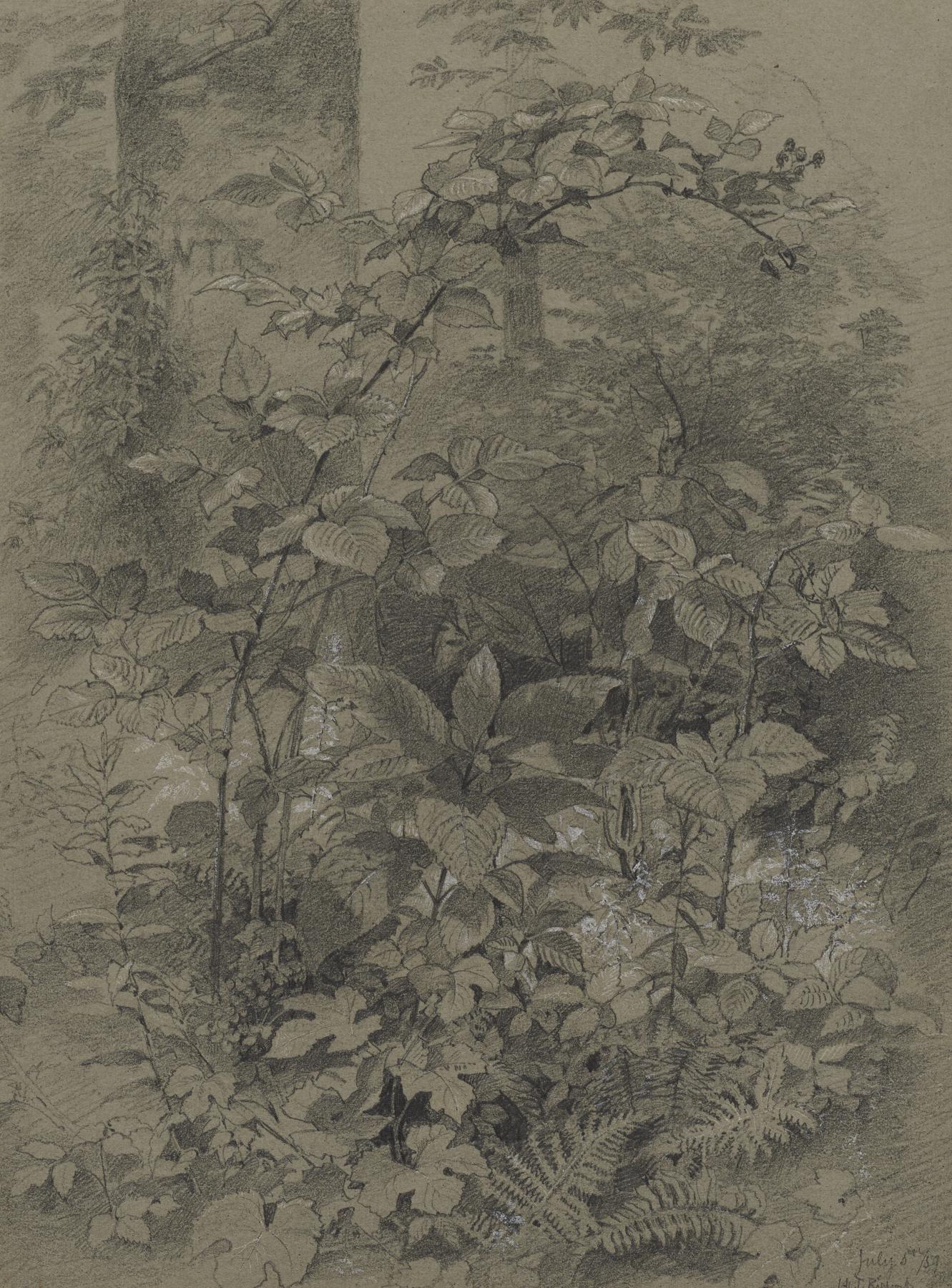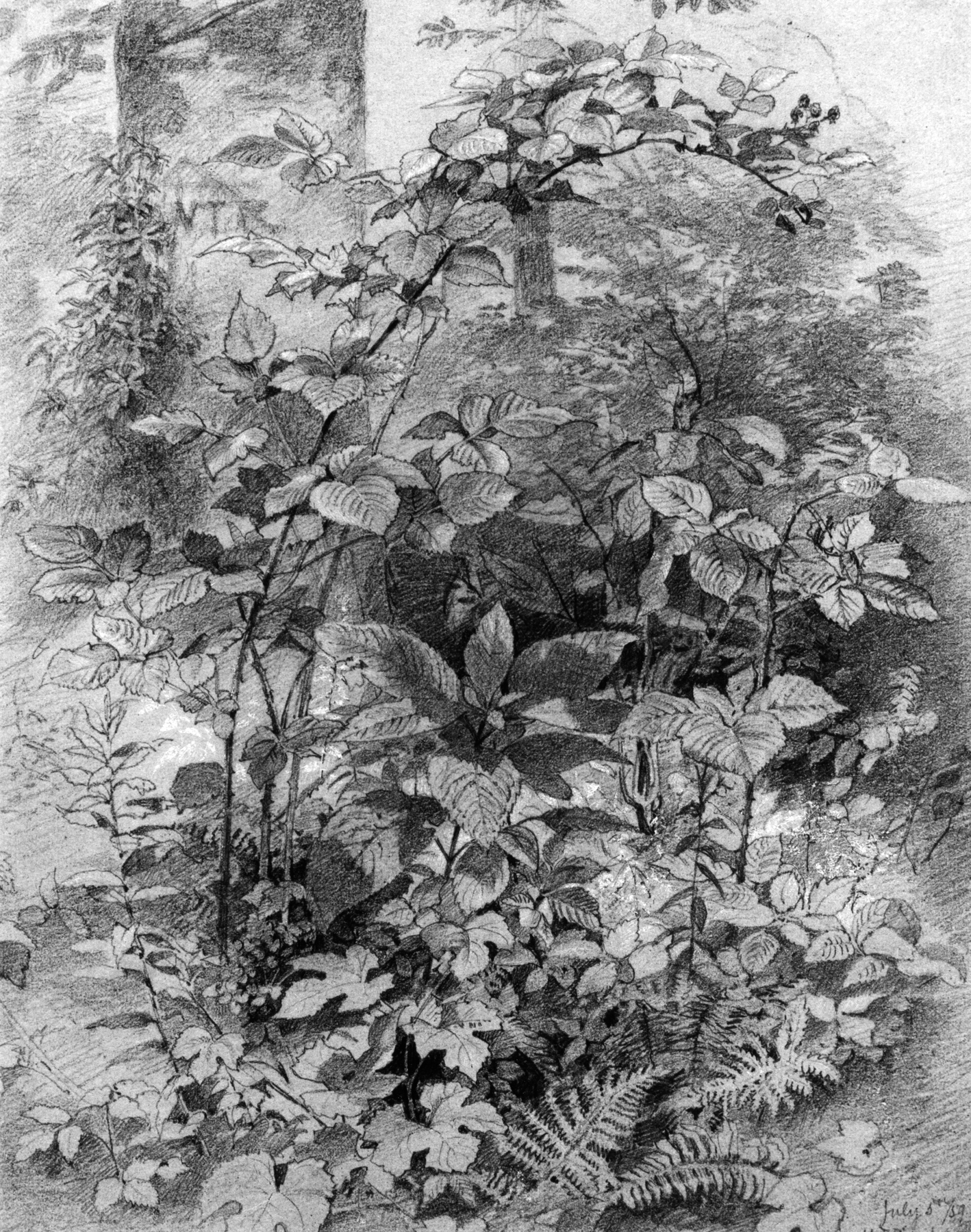Woodland Plants
(18th and 19th Centuries )
Richards was a Philadelphia artist who was known for his meticulously faithful rendering of nature inspired by the writings of the influential critic John Ruskin. Ruskin's influence can be seen on Richards' work from 1858; this work is dated 5 July 1859 and is therefore an early example. The artist's initials can be seen carved into the bark of the tree in the background.
William T. Walters owned a oil by Richards title "Tulip Trees" executed in the same year, however, he sold this work in around 1861 when he relocated to Paris at the time of the Civil War. At this time Walters shifted his collecting activity from American to European art. "Tulip Trees" is now in the collection of the Brooklyn Museum of Art.
Inscription
Provenance
Provenance (from the French provenir, 'to come from/forth') is the chronology of the ownership, custody, or location of a historical object. Learn more about provenance at the Walters.
William T. Walters, Baltimore; inherited by Henry Walters, Baltimore, 1894; by bequest to Walters Art Museum, 1931.
Exhibitions
| 1998-1999 | A Discerning Eye: Nineteenth-century Drawings and Watercolors. Academy Art Museum, Easton. |
| 1998-1999 | Botanical Delights: Floral Motifs in 19th-Century Art. Government House, Annapolis; Strathmore Hall Art Center, North Bethesda; Academy Art Museum, Easton. |
Geographies
USA (Place of Origin)
Measurements
H: 7 1/8 x W: 5 5/16 in. (18.1 x 13.5 cm)
Credit Line
Acquired by William T. Walters
Location in Museum
Not on view
Accession Number
In libraries, galleries, museums, and archives, an accession number is a unique identifier assigned to each object in the collection.
In libraries, galleries, museums, and archives, an accession number is a unique identifier assigned to each object in the collection.
37.1548






